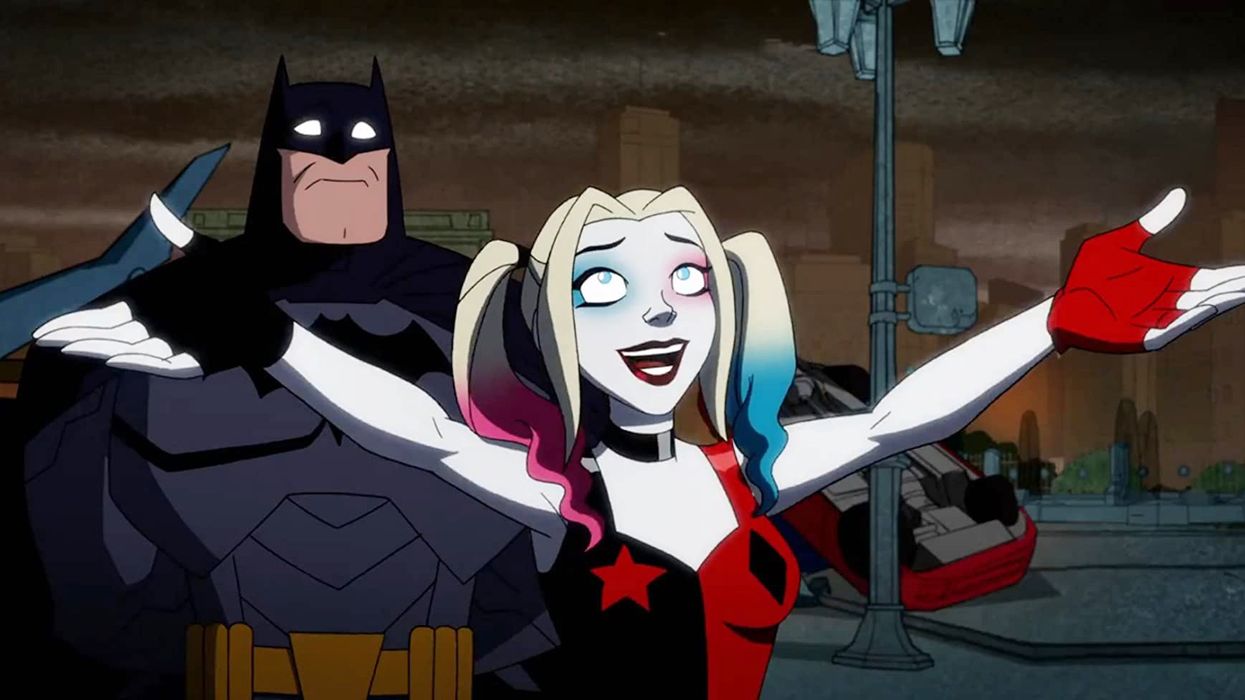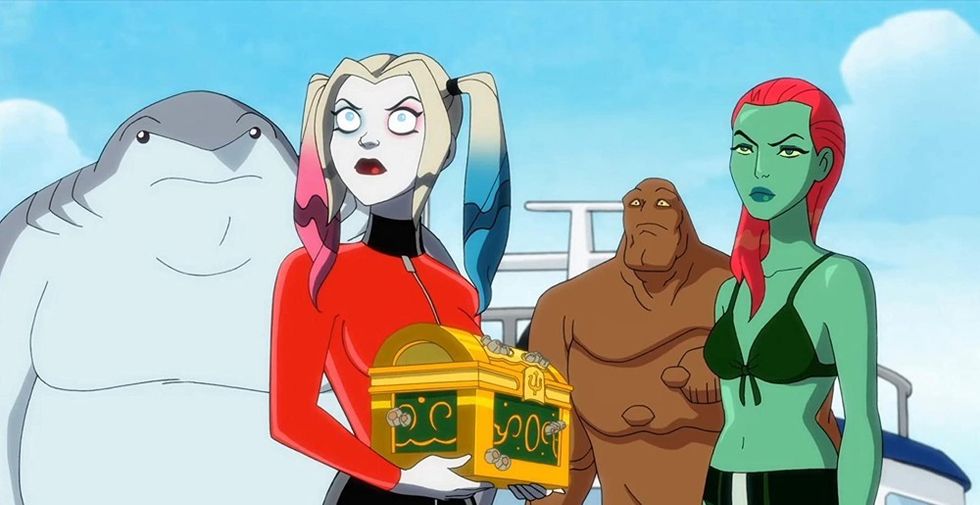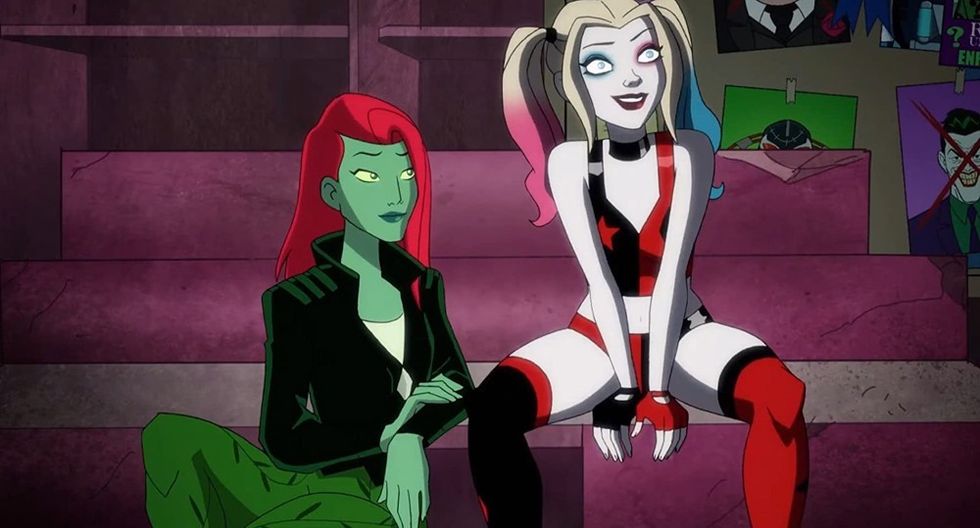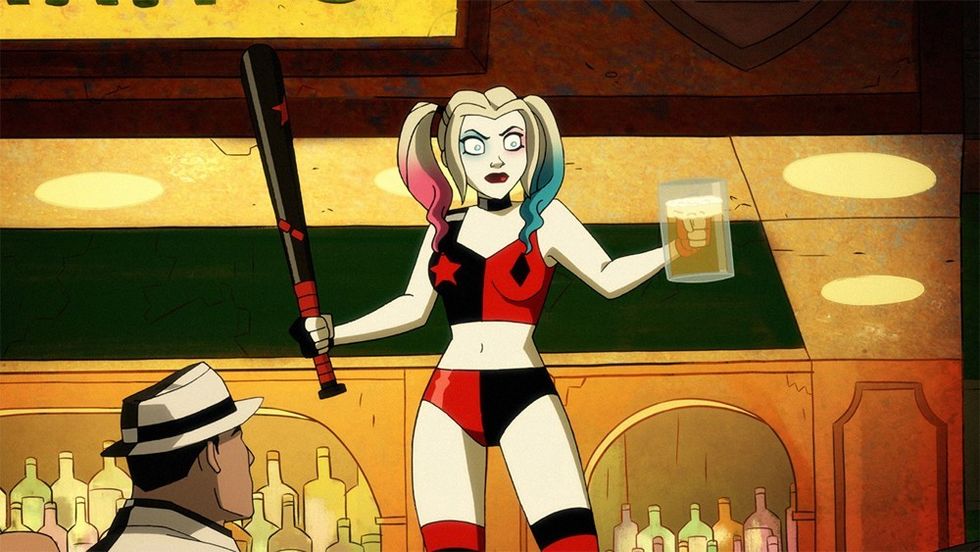Learn How to Create an Aural Point of View from the ‘Harley Quinn’ Sound Team
Dig into our interview with supervising sound editor George Peters on how sound can shape story.

It’s a good time to be a fan of the Batman ethos. Storytellers are painting the popular comic book characters with a fresh canvas.
The Joker intertwined the effects of mental health and psychological torment in a malevolent character study. Matt Reeves is directing The Batman, the first solo feature since Nolan’s Dark Knight trilogy, which is scheduled for a June 2021 release. Editor Fred Raskin is currently cutting the Suicide Squad sequel. And Harley Quinn, who has become one of the most popular female superhero characters since appearing on Batman: The Animated Series, broke away for a solo story in Birds of Prey.

If you haven’t watched the new animated series Harley Quinn on the DC Universe, you’re missing out. Created by Justin Halpern, Dean Lorey, and Patrick Schumacker, it’s undeniably entertaining.
And it’s not just because Harley and her team of co-conspirators drop the occasional f-bomb—though the juxtaposition is hilarious. Imagine Papa Smurf telling Gargamel to “go fuck off.” You can’t help but laugh. The allure of the show, especially for Harley fans, is you get to see the world through her eyes, which happens to be a violent, I-don’t-give-a-fuck attitude.
Now in its second season, which started April 3, character story arcs are breaking further away from traditional molds—Harley (Kaley Cuoco) and Poison Ivy (Lake Bell) heading toward a romantic relationship being one of them.
Sound plays an important role in any feature or series, and No Film School wanted to find out how the show’s aural landscape is crafted to create Harley’s perspective. We sat down with sound supervisor George Peters, who also serves as the re-recording mixer and has been on the show since its inception.

No Film School: Having watched the series, it’s really different than any other comic book cartoon out there. Was that what intrigued you about it?
George Peters: I’ve always been a big comic book fan, a Batman fan, and animation fan, and it was shocking for me the first time we recorded it. It was unlike anything I’ve done before and I was immediately on board because of it.
NFS: The dialogue is smart yet crass. Bane is freakin’ hilarious. Hands down my favorite. Everything about it is unique but familiar.
GP: Yeah. I think that is part of the draw of the show. The creators, Justin, Dean, and Patrick, were very adamant about making something different. Something people were not expecting from a Batman cartoon, even though it’s Batman adjacent.
NFS: How did the creators pitch the sound of the show?
GP: The example they gave was Tarantino-esque. What that translated into was ultra-violent and hyper-real. This was a Gotham City from Harley’s point of view and not something you’d hear in Tim Burton’s Batman or Nolan’s. It was a new Gotham that was right in your face and had to shock the audience.
NFS: What did that mean for the soundscape?
GP: When I talked to the sound editors I told them to make it as violent as they can. To make sure the violence jumps off the screen. Then once you are there, add another 10%. Since the show is on the DC Universe, and not your typical distribution services like a Cartoon Network or HBO, it allowed it to have its own voice.
NFS: You don’t have to worry about the FCC too much either.
GP: Funny thing is we did air the pilot on TBS and had to bleep out a lot of the swear words.
NFS: Since you brought up the pilot. Was setting the tone early on important?
GP: Probably everyone who was going to watch it had preconceived notions about what the show could be about. But in the very first scene, there’s a rich guy saying something like, now on to our favorite thing do, fucking the poor. Then Harley comes in and drops more f-bombs and she’s massacring these billionaires. Everyone watching gets the message real fast.
NFS: So was the sound design a complete overhaul from traditional Batman sounds?
GP: We didn’t want to reuse what was done in the past since it’s a Harley show. But some of the things like the Batmobile and Batwing are similar. The team who works on this show has a strong sense of what something should sound like on screen.
Our lead sound designer Evan Dockter has been with us from the beginning, and sound editor Robert Hargreaves came on in season two, and he's worked on the original animated Batman series. Roger Pallan and Grant Meuers are also part of the team.
NFS: While on the topic of the Batmobile. Did the design influence how it sounds?
GP: It did. We started with something we used in the past, but the final design made us go in a different direction. Instead of a roaring big diesel engine, it ended up being more like a motorcycle in Tron as it has this light blue flame behind it.

NFS: So how does sound help shape Harley’s point of view?
GP: A lot of it has to do with focusing the audio, and for this show, making it louder. We do that in a couple of different ways. For example, in the first episode, Harley beats up the Joker’s crew. She uses a bat and breaks their arms and legs. Mark designed the scene, and in the mix, we turned everything down and then highlight the big hit so the attention is right there.
NFS: So her perspective is hyper-focused in a sense.
GP: Kind of. So often in Batman movies or animated series, the violence is a means to a goal where he is trying to get to somewhere else. In Harley Quinn, the violence is almost the goal.
So we will often do a quick freeze on a frame where you see an arm break and you’re going to hear it. You will hear every drop of blood and the scream of the guy. So when there is violence, we will push all the backgrounds and everything off to the side speakers and have the crack of the bat and blood come out of the center channel. Or bring everything else down so that’s all you really hear.
NFS: When sound effects are used just as much to drive story points, how do you make sure it doesn’t get in the way of dialogue?
GP: For this, after all the dialogue, music, foley, and sound effects are gathered, I will mix the dialogue according to the Warner Bros. spec sheet. The dialogue level needs to be an average of -24 dB. Then there’s a peak level of -4 dB.
Once the dialogue is set, I don’t touch that again because that’s the bar. So when I mix in the effects, music, and foley, if Harley is speaking and drowned out, I know I have to bring down the effects. But a lot of the times, I’m mixing to how I think scenes should feel.
NFS: How can sound mixers make scenes more dynamic with sound effects?
GP: In season two, there’s a scene where Harley fights the Penguin and bites his nose off and he starts shooting her with his umbrella. For the scene, editors looked at everything in the background. All the physical pieces in the room. The atmosphere. Then the bone crunch when Harley takes off his nose. The blood. Then the eventual shootout and all the foley movements of the characters. Each single element can be designed and added into the mix. It’s almost like a Lego set where you can put all the pieces together to create something larger.
NFS: Any tips on building explosions?
GP: You’re looking for three different levels. That means sounds that cut through the low frequencies, mid frequencies, and high frequencies. With a big explosion, I not only want the rumble of the explosion, but the pop of the explosion, which would be a different frequency range.
You’re not just looking for one sound effect in the middle frequency range, but you want to hit every aspect of it. You want to hit something in the higher end, maybe with flames or a hiss of gas, and something in the lower end too.

NFS: So find a balance in the frequency ranges?
GP: Exactly. I tend to save the really low frequencies for bigger things and larger explosions that will come through the subwoofer. It’s important to use sound effects that don’t sit in the same range as the dialogue. Find ones that have some distance from the dialogue and the other sound elements in the track.
NFS: Let me get you out on this. Do you have any advice on working with a director or client who isn’t expressing how they hear or want the sound?
GP: It’s something you learn with experience, but draw out as much as you can through conversations. It isn’t as important to ask about exact sounds. Ask them about the story or if they have any references. Then during spotting sessions, ask them what they think specific things should sound like. How loud something should be. Is it more wet? Is it more violent? Do you want to hear bones cracking? Try to get a feel for how you can support the story any way you can.











